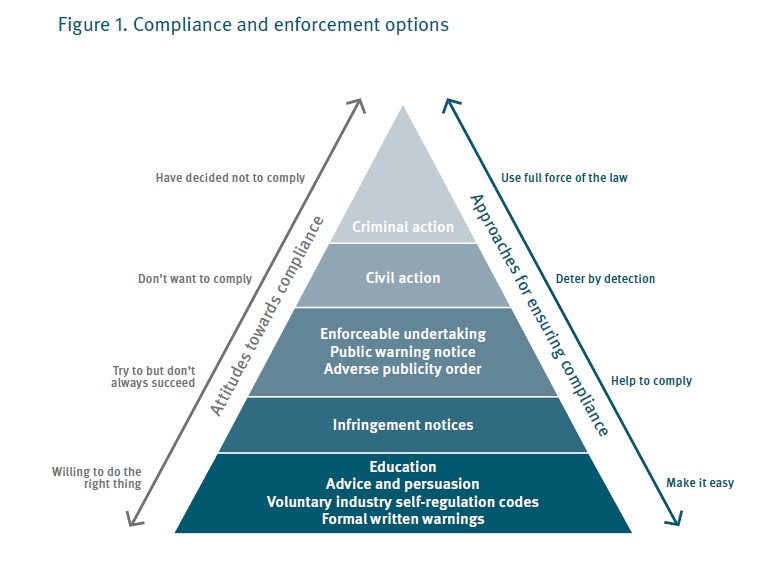Last month the Compliance and Enforcement Guide (Guide) to Australian Consumer Law was released, covering how State and Commonwealth regulators enforce the ACL. The Guide is one of six developed by consumer protection agencies in Australia to help businesses understand their legal responsibilities. The release of the Guide was shortly followed by the ACCC’s own Compliance and Enforcement Policy (Policy) (see our alert here).
The Guide lists seven principles which ACL regulators use when undertaking compliance and enforcement activity:
- Transparency: ACL regulators will deal with consumers and businesses in an open and transparent manner.
- Confidentiality: All enquiries will be undertaken in accordance with the confidentiality requirements in each jurisdiction and regulators will balance confidentiality requirements against the public interest.
- Proportionality: Enforcement action will be taken which is proportionate to the level of consumer detriment and seriousness of the breach.
- Timeliness: Enforcement processes will be conducted as efficiently as possible to avoid costly delays, business uncertainty and to minimise detriment to consumers.
- Targeted: ACL regulators will strategically target issues in line with priorities for the year.
- Accountability: ACL regulators are accountable for their compliance and enforcement activity.
- National collaboration: ACL regulators are mindful of the national implication of actions and the public interest in making decisions to undertake compliance and enforcement activity.
The Guide sets out the matters ACL regulators prioritise, including those of public interest, those resulting in significant consumer detriment, and those that affect disadvantaged or vulnerable consumer groups, which certainly accords with the ACCC’s priorities in its Policy.
The Guide refers to the range of compliance and enforcement options available to ACL regulators and provides an infographic as a convenient summary of the approaches that might be taken for ensuring compliance with the ACL:

Interestingly, the Guide also emphasises the advantages of public statements such as media releases and public warning notices as a means to prevent or reduce consumer detriment by alerting consumers to alleged misconduct. The ACCC in particular has recently used public statements, not only to put recent sectors on notice (e.g. its media release on the Hearing Aid Sector), but also to notify the general public of alleged conduct of concern (e.g. see this Public Warning Notice issued under s 223 of the ACL to Danish company LuxStyle).
While the Guide delivers no real surprises, it provides direction for regulators and informs consumers and businesses alike that although “each ACL regulator is independent, has its own enabling legislation and exercises its powers and functions accordingly”, each has agreed to consider the Guide and has agreed to general principles including for compliance and enforcement action.
[Image credit: https://www.flickr.com Bernard Goldbach / CC2.0 ]








